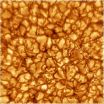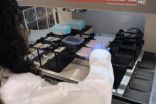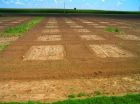(Press-News.org) UCLA researchers have found that a protein that plays an important role in some antioxidant therapies may not be as effective due to additional mechanisms that cause it to promote atherosclerosis, or clogging of the arteries.
Published in the January issue of the journal Arteriosclerosis, Thrombosis and Vascular Biology, the finding may give clues as to why some antioxidant therapies have not yielded more positive results.
The protein, called Nrf2, has been thought to be an important drug-therapy target for diseases such as cancer because it can induce chemopreventive activity by attaching to specific sequences of DNA, leading to the release of numerous antioxidant and anti-inflammatory genes and enzymes that can decrease or inhibit the effects of carcinogens.
Researchers reasoned that Nrf2, with its potent ability to boost antioxidants, might also be useful in combating the cell and tissue damage, or oxidation, that leads to atherosclerosis.
However, UCLA scientists found that while Nrf2 boosted antioxidant properties in an animal model, it also increased the development of atherosclerosis by raising plasma cholesterol levels and cholesterol content in the liver.
According to researchers, this is the first study to document these additional effects on cholesterol metabolism in tandem with plaque formation in the arteries.
"We were very surprised at the finding," said principal investigator Dr. Jesus Araujo, director of environmental cardiology at the David Geffen School of Medicine at UCLA. "In fact, the atherosclerosis-producing factors were greater than the antioxidant benefits. The development of novel antioxidant therapies is quite important, and this research may help shed light on why treatments affecting this protein may not be as effective as we thought."
For the study, the team was able to isolate and identify Nrf2's actions by looking at what would happen in mice that were specially bred without the protein.
Researchers found that male mice without Nrf2 had decreased levels of antioxidants, as would be expected, but also exhibited a 53 percent reduction in atherosclerotic plaques in the aorta, compared with normal animals. Mice with only half the gene expression for Nrf2 exhibited the same degree of plaque formation as normal animals.
The team then tried to arrive at a better understanding of what was going on by evaluating several factors that could be affected by the Nrf2 protein.
Scientists found that the mice without any Nrf2 had lower levels of total cholesterol in the blood and lower amounts of cholesterol in the liver. The protein deficiency also led to reduced expression of the genes involved in synthesizing and storing fat and regulating glucose in the liver, which are part of the process of manufacturing cholesterol.
According to Araujo, the study findings point to new and important effects of the Nrf2 protein in regulating cholesterol production as well as antioxidant pathways.
"The cholesterol effects may need to be taken into consideration when developing antioxidant therapies using this protein," said Fen Yin, a co-author of the study and a research associate in the division of cardiology at UCLA. "The dosage or level of this gene expression could be important to balance the two effects."
In addition, investigators found that most of the effects of Nrf2 were more highly prevalent in the male mice. More studies will be needed to examine whether these sex differences in the animal model would be similar in humans.
Araujo noted that more research will also assess whether other environmental, metabolic and genetic elements play a role in the impact of Nrf2 on cholesterol and antioxidants.
INFORMATION:
The study was funded by the National Institute of Environmental Health Sciences; the National Heart, Lung and Blood Institute; the American Heart Association; and the Robert Wood Johnson Foundation.
Other authors include Berenice Barajas, Nam Che, Amir Rowshanrad, Luz D. Orozco, Ke Wei Gong, Xupring Wang, Lawrence W. Castellani, Karen Reue and Aldons J. Lusis.
For more news, visit the UCLA Newsroom and follow us on Twitter.
Protein thought to protect against oxidative stress also promotes clogging of arteries
UCLA finding may help explain ineffectiveness of some antioxidant therapies
2011-01-11
ELSE PRESS RELEASES FROM THIS DATE:
New species of flying reptile identified on B.C. coast
2011-01-11
Persistence paid off for a University of Alberta paleontology researcher, who after months of pondering the origins of a fossilized jaw bone, finally identified it as a new species of pterosaur, a flying reptile that lived 70 million years ago.
Victoria Arbour says she was stumped when the small piece of jaw bone was first pulled out of of a fossil storage cabinet in the U of A's paleontology department.
"It could have been from a dinosaur, a fish or a marine reptile," said Arbour. "
Arbour, a PhD student in paleontology, says the first clue to the fossil's identify ...
New glass tops steel in strength and toughness
2011-01-11
Glass stronger and tougher than steel? A new type of damage-tolerant metallic glass, demonstrating a strength and toughness beyond that of any known material, has been developed and tested by a collaboration of researchers with the U.S. Department of Energy (DOE)'s Lawrence Berkeley National Laboratory (Berkeley Lab)and the California Institute of Technology. What's more, even better versions of this new glass may be on the way.
"These results mark the first use of a new strategy for metallic glass fabrication and we believe we can use it to make glass that will be even ...
How do you make lithium melt in the cold?
2011-01-11
Washington, D.C. — Sophisticated tools allow scientists to subject the basic elements of matter to conditions drastic enough to modify their behavior. By doing this, they can expand our understanding of matter. A research team including three Carnegie scientists was able to demonstrate surprising properties of the element lithium under intense pressure and low temperatures. Their results were published Jan. 9 on the Nature Physics website.
Lithium is the first metal in the periodic table and is the least dense solid element at room temperature. It is most commonly known ...
First strawberry genome sequence promises better berries
2011-01-11
DURHAM, N.H. – An international team of researchers, including several from the University of New Hampshire, have completed the first DNA sequence of any strawberry plant, giving breeders much-needed tools to create tastier, healthier strawberries. Tom Davis, professor of biological sciences at UNH, and postdoctoral researcher Bo Liu were significant contributors to the genome sequence of the woodland strawberry, which was published last month in the journal Nature Genetics.
"We now have a resource for everybody who's interested in strawberry genetics. We can answer questions ...
New insights into sun's photosphere reported by NJIT researcher at Big Bear
2011-01-11
NJIT Distinguished Professor Philip R. Goode and the research team at Big Bear Solar Observatory (BBSO) have reported new insights into the small-scale dynamics of the Sun's photosphere. The observations were made during a period of historic inactivity on the Sun and reported in The Astrophysical Journal . http://iopscience.iop.org/2041-8205/714/1/L31 The high-resolution capabilities of BBSO's new 1.6-meter aperture solar telescope have made such work possible.
"The smallest scale photospheric magnetic field seems to come in isolated points in the dark intergranular ...
Body dysmorphic disorder patients who loathe appearance often get better, but it could take years
2011-01-11
PROVIDENCE, R.I. [Brown University] — In the longest-term study so far to track people with body dysmorphic disorder, a severe mental illness in which sufferers obsess over nonexistent or slight defects in their physical appearance, researchers at Brown University and Rhode Island Hospital found high rates of recovery, although recovery can take more than five years.
The results, based on following 15 sufferers of the disease over an eight-year span, appear in the current issue of the Journal of Nervous and Mental Disease.
"Compared to what we expected based on a prior ...
Debunking solar energy efficiency measurements
2011-01-11
In recent years, developers have been investigating light-harvesting thin film solar panels made from nanotechnology –– and promoting efficiency metrics to make the technology marketable. Now a Tel Aviv University researcher is providing new evidence to challenge recent "charge" measurements for increasing solar panel efficiency.
Offering a less expensive, smaller solution than traditional panels, Prof. Eran Rabani of Tel Aviv University's School of Chemistry at the Raymond and Beverly Sackler Faculty of Exact Sciences puts a lid on some current hype that promises to ...
Study identifies new genetic signatures of breast cancer drug resistance
2011-01-11
A new study conducted by Josh LaBaer's research team in the Biodesign Institute at Arizona State University has pinpointed more than 30 breast cancer gene targets ---including several novel genes---that are involved in drug resistance to a leading chemotherapy treatment.
The results of the study may one day aid in the treatment of the one in ten U.S. women who will develop breast cancer, by empowering physicians with a more personalized approach to therapy as well as a new tool for the early screening of those that may ultimately become resistant to chemotherapy.
Drugs ...
Study estimates land available for biofuel crops
2011-01-11
CHAMPAIGN, Ill. — Using detailed land analysis, Illinois researchers have found that biofuel crops cultivated on available land could produce up to half of the world's current fuel consumption – without affecting food crops or pastureland.
Published in the journal Environmental Science and Technology, the study led by civil and environmental engineering professor Ximing Cai identified land around the globe available to produce grass crops for biofuels, with minimal impact on agriculture or the environment.
Many studies on biofuel crop viability focus on biomass yield, ...
Miscanthus has a fighting chance against weeds
2011-01-11
University of Illinois research reports that several herbicides used on corn also have good selectivity to Miscanthus x giganteus (Giant Miscanthus), a potential bioenergy feedstock.
"No herbicides are currently labeled for use in Giant Miscanthus grown for biomass," said Eric Anderson, an instructor of bioenergy for the Center of Advanced BioEnergy Research at the University of Illinois. "Our research shows that several herbicides used on corn are also safe on this rhizomatous grass."
M. x giganteus is sterile and predominantly grown by vegetative propagation, or planting ...
LAST 30 PRESS RELEASES:
Sleeping in on weekends may help boost teens’ mental health
Study: Teens use cellphones for an hour a day at school
After more than two years of war, Palestinian children are hungry, denied education and “like the living dead”
The untold story of life with Prader-Willi syndrome - according to the siblings who live it
How the parasite that ‘gave up sex’ found more hosts – and why its victory won’t last
When is it time to jump? The boiling frog problem of AI use in physics education
Twitter data reveals partisan divide in understanding why pollen season's getting worse
AI is quick but risky for updating old software
Revolutionizing biosecurity: new multi-omics framework to transform invasive species management
From ancient herb to modern medicine: new review unveils the multi-targeted healing potential of Borago officinalis
Building a global scientific community: Biological Diversity Journal announces dual recruitment of Editorial Board and Youth Editorial Board members
Microbes that break down antibiotics help protect ecosystems under drug pollution
Smart biochar that remembers pollutants offers a new way to clean water and recycle biomass
Rice genes matter more than domestication in shaping plant microbiomes
Ticking time bomb: Some farmers report as many as 70 tick encounters over a 6-month period
Turning garden and crop waste into plastics
Scientists discover ‘platypus galaxies’ in the early universe
Seeing thyroid cancer in a new light: when AI meets label-free imaging in the operating room
Neutrophil-to-lymphocyte ratio may aid risk stratification in depressive disorder
2026 Seismological Society of America Annual Meeting
AI-powered ECG analysis offers promising path for early detection of chronic obstructive pulmonary disease, says Mount Sinai researchers
GIMM uncovers flaws in lab-grown heart cells and paves the way for improved treatments
Cracking the evolutionary code of sleep
Medications could help the aging brain cope with surgery, memory impairment
Back pain linked to worse sleep years later in men over 65, according to study
CDC urges ‘shared decision-making’ on some childhood vaccines; many unclear about what that means
New research finds that an ‘equal treatment’ approach to economic opportunity advertising can backfire
Researchers create shape-shifting, self-navigating microparticles
Science army mobilizes to map US soil microbiome
Researchers develop new tools to turn grain crops into biosensors
[Press-News.org] Protein thought to protect against oxidative stress also promotes clogging of arteriesUCLA finding may help explain ineffectiveness of some antioxidant therapies




